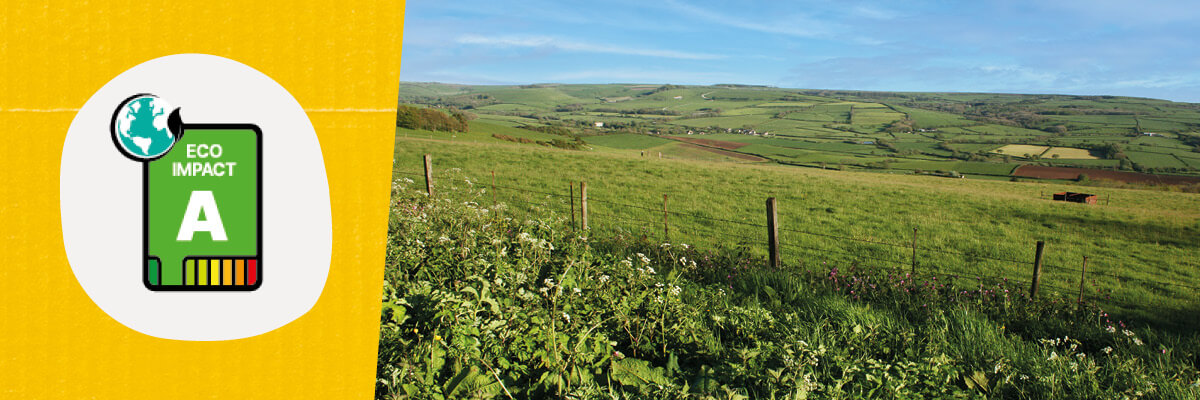Eco-Impact Labelling: Helping You Reduce Your Carbon Footprint

We're going the extra mile to help you cut carbon
We're incredibly proud to be the first organic food delivery company in the world to achieve both the Carbon Neutral International Standard and to join the UN's Climate Neutral Now Initiative. This means that all of our organic deliveries are now certified carbon neutral.
But when it comes to helping you cut your personal carbon footprint, we want to go even further. This is where eco-impact labelling comes into play.
"Eco-impact labelling is a voluntary method of environmental performance certification," explains our Head of Sustainability, Stef. "Eco-labels rate products according to their environmental impact, giving them a score of A, B, C, D and so on. This means that at a glance, you can easily identify which items in your basket are better for our planet."

To get the ball rolling, we've been working with the sustainability experts at Mondra. So far, we've completed Life Cycle Analysis assessments for seven of our most popular items. This has enabled us to generate eco-impact labels for our bananas, blueberries, potatoes, vine tomatoes, semi-skimmed milk, eggs and salmon.

How does eco-impact labelling work?
Eco-impact labelling is an incredibly detailed and complex process. To generate a final score, each item is measured against four key criteria: carbon emissions, water usage, water pollution and biodiversity.
Carbon emissions
The carbon emissions score takes into account all of the greenhouse gases that are emitted when creating a product. Greenhouse gases are the main drivers of climate change, so are vital to consider as part of the eco-impact labelling process.
Water usage and water pollution
The water usage score includes all of the water that's required to create a product. Water scarcity is a critical issue around the world, so it's important for us to consider how much water our products are using.
Water pollution is measured in terms of eutrophication. This is where fertiliser or manure runs off the fields, and into lakes and rivers. Algae then grows wild, robbing everything below the surface of oxygen and sunlight.
Biodiversity
The final consideration is biodiversity. The land that's used to grow our produce or rear animals is mapped to ecoregions, which show how biodiverse that area is. We rely on a biodiverse planet to produce our food, so it's another key piece of the puzzle.

The results
By completing these assessments, Mondra have been able to tell us not only how our products score and where there's room for improvement, but how they compare to produce from four major UK supermarkets.

On average, our products emit 16% less CO2e than their non-organic counterparts from supermarkets.
By enjoying these items, you're saving 24kg of CO2e a year - that's the equivalent of heating your home for three days.
When considered on their own, our fruit and veg have an even higher carbon saving of 53%.
What next?
Over the coming months, we'll be working hard to roll out eco-impact labelling across more of our items. We hope you'll find it a helpful and easy way to adjust your basket, and make even more informed, environmentally conscious choices when you shop.
Published October 2021


